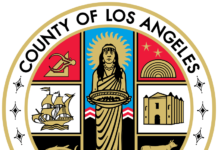Catalina Island is already using desalinization to increase its water supply.
As the Island continues to face rationing because of the prolonged drought, it may be time to consider even more ways to “produce” more water on the Island.
Last week, we examined the future of Catalina’s water supply. In this, our fourth column on the Island’s water supply, we look at ways to improve our future prospects by creating new water supplies or saving the water we have.
Sea water desalinization and distillation
Catalina Island is already using desalinization to increase its water supply.
As the Island continues to face rationing because of the prolonged drought, it may be time to consider even more ways to “produce” more water on the Island.
Last week, we examined the future of Catalina’s water supply. In this, our fourth column on the Island’s water supply, we look at ways to improve our future prospects by creating new water supplies or saving the water we have.
Sea water desalinization and distillation
Desalinization is a well-proven technology developed in the 1960s.
The Island’s desalinization plant is a “reverse osmosis” plant that is relatively expensive because of the cost of maintenance and the energy to operate it.
On the plus side, desalinization is consistently reliable, and Catalina Island will never run out of sea water.
With this abundance of seawater, other desalinization processes could provide more fresh water.
Various technologies “distill” fresh water from saltwater by evaporating the ocean water, which leaves the salt molecules behind, and then condensing the salt-free water.
Some of these technologies date back more than 100 years, but 21st Century versions are now commercially available.
Recently, for instance, an Australian company, F-Cubed, contacted the Conservancy about its passive solar distillation process, which can deliver varying amounts of water, depending on how many of the solar distillation panels are deployed.
Reclaimed water
Reclaimed (reused) water basically involves taking water that was used for some purpose, treating it to some level of “cleanness” and then reusing it for an appropriate purpose.
For example, “gray” water can be “reclaimed” from showers and washing machines and then used to irrigate gardens and landscaping after minimal, household-scale treatment.
Water can be reclaimed by a home, a neighborhood or even an entire city.
On a larger scale, the water that leaves the City of Avalon’s wastewater treatment plan, after undergoing primary and secondary treatment, is “clean” (meaning it is free of pathogens and conventional pollutants) and can be used for landscape irrigation or piped into the Island’s sanitary system to flush toilets.
If this water was processed through a reverse osmosis or distillation process, it would be “cleaner” than the groundwater we presently use for drinking. The biggest hurdle in getting people to drink treated wastewater is the negative perceptions people have of water coming from “toilet-to-tap.”
However, in many urban areas, where the base flow of rivers is already made up of treated wastewater, people are already drinking treated wastewater but may not realize it.
Water conservation
Water conservation is basically reducing the amount of water currently used through (showers, toilet flushes, drinking, washing, irrigation, etc.) so that we consume our existing stores of water much slower.
Conservation has several advantages, including:
1) Avoiding mandatory rationing by saving existing water supplies for later use.
The 30 percent reduction we have achieved under Stage 2 rationing has been relatively painless economically.
A 50 percent reduction would not be.
2) Avoiding expensive upgrades to water production and treatment facilities to expand supplies and the unintended environmental impacts of such expansions.
3) Ensuring reserves for future deficits, which may be caused by longer, or more, frequent droughts due to climate change.
Water harvesting
Finally, there is water “harvesting.”
Many civilizations in dry climates have captured rainwater from roofs and stored it for the dry seasons.
This is still done in places like Bermuda (although they use limestone on their roofs, rather than the typical asphalt shingles used in American suburbs, to keep the runoff drinkable.)
Many high-tech versions of this proven approach are available today.
All these approaches capture rainfall or dew and fog that condense on roofs, gutters, roads and other hard surfaces found in the urban environment.
The collected water is then diverted to rain barrels, cisterns, ponds or other storage devices.
More commonly, most new stormwater management systems capture rainwater onsite for later use (usually for irrigation and other non-potable uses), slow it down to more closely mimic the natural movement of water after a rainstorm or infiltrate it into the ground. There are also techniques for harvesting water from fog or dew.
If appropriately scaled to fit the household, neighborhood or city, significant amounts of water could be “harvested” to replace the use of more valuable or expensive drinking water (e.g. groundwater and desalinated water) for drinking, bathing and other “potable” uses.
Next week: The final story in the series will discuss how to make a difference in Catalina’s water future.
John J. Mack is the Catalina Island Conservancy’s chief conservation and education officer.
For more information about the Conservancy, visit catalinaconservancy.org.
The Catalina Island Conservancy has been an active participant in the Catalina Island Consortium, a group of Island stakeholders that has sought to maintain an affordable and sustainable fresh water supply for the Catalina Island community.
The Consortium, working with Southern California Edison and the California Public Utility Commission, was recently successful in averting significant water rate increases on the Island.









